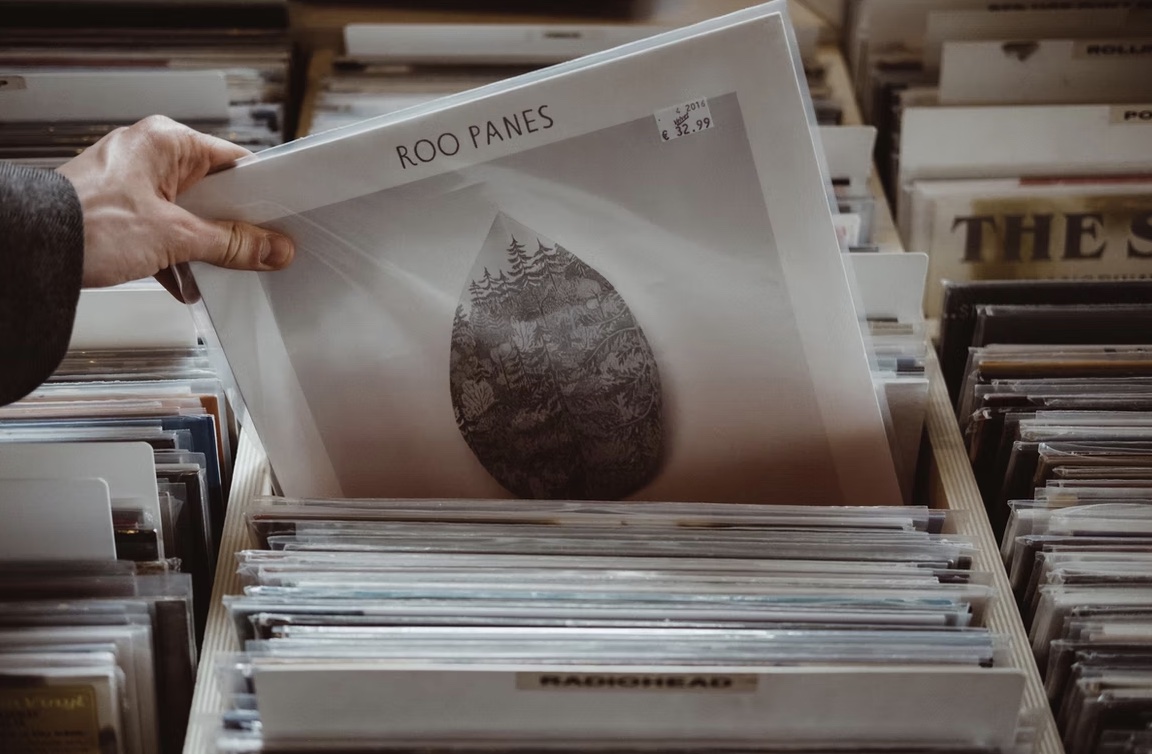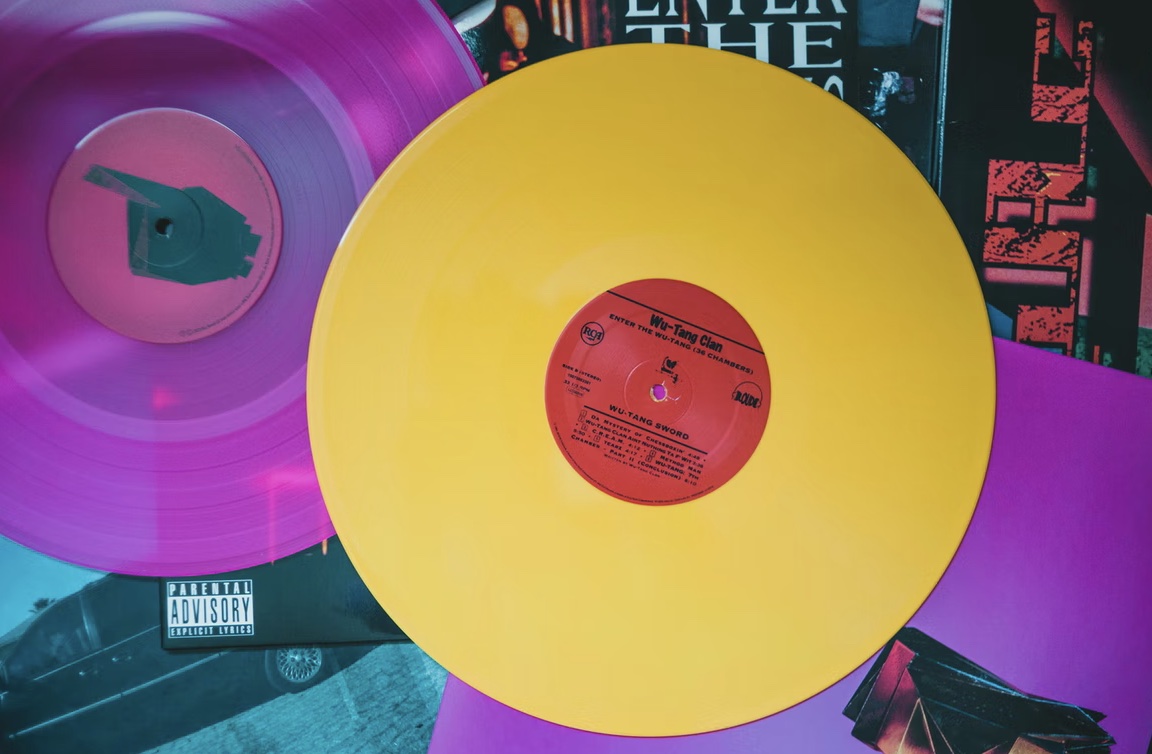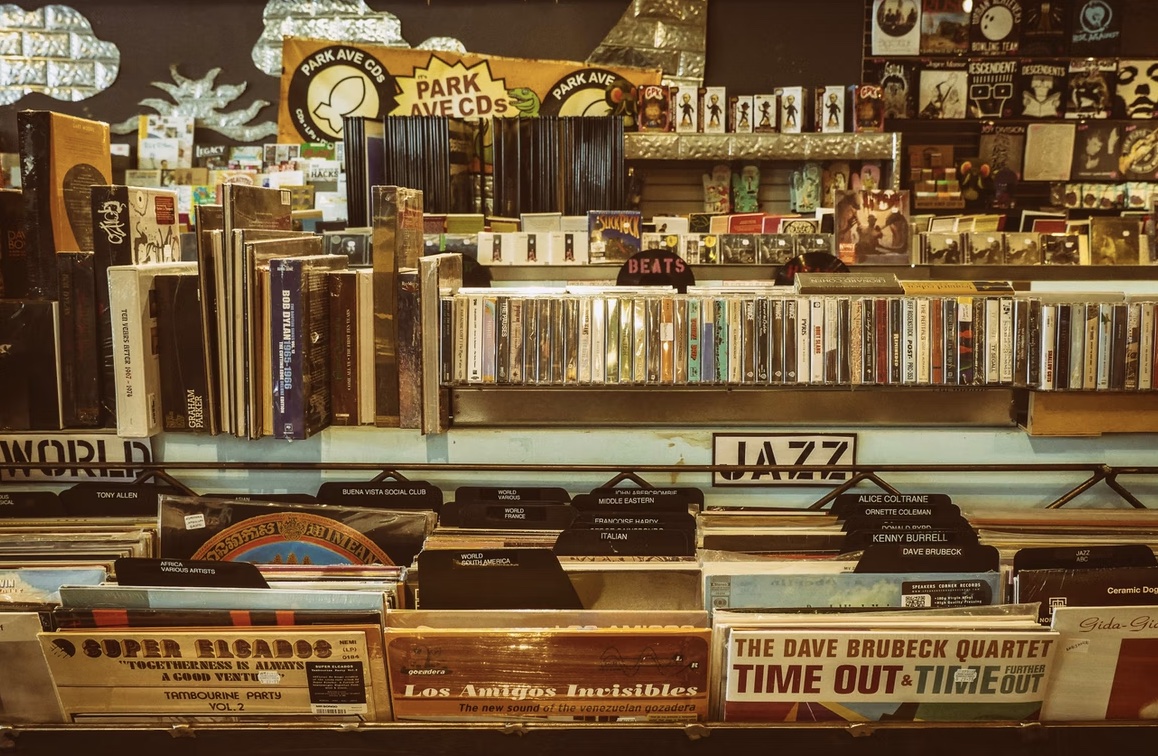One of the most interesting things to happen to the music industry in the last two decades is the vinyl resurgence.
Rescued from the dustbin of history, this format (almost 100 years old at this point) bucked the trend and became the coolest way to own a physical copy of your favourite tunes.
That’s something 8-track tapes, cassettes, and CDs have never been able to do. Plus, vinyl did this while music streaming became the go-to way people consume music. It’s never been more convenient and less expensive to listen to any music you want, whenever. And yet people are buying vinyl records in huge numbers.
For many music fans, this is a romantic story. It tells the underdog tale of an audio format that was destined for obscurity, only to recapture the imagination of music lovers who resisted the digitization of all human life.
But, as with everything in this world, there is a downside.
It turns out that vinyl records are damaging to the environment.
To understand the issue, we need to dive deep. We need to understand why vinyl is en vogue, and what it is about them that is destructive to our planet.
So let’s take a look at the vinyl resurgence and its long term effects on how we listen to music and how we live on Earth.
Why Vinyl Became So Popular (Again)

The first commercially available vinyl record was released in 1931 by RCA Victor. The technology had been around since the 20s, but now, normal people could bring music into their home and listen whenever they wanted.
By using vinyl instead of shellac (a bug derived material that most music was pressed on at the time) high quality music could be achieved at a much slower speed, meaning more music per record. However, without many people owning the equipment to actually listen, it quickly proved a commercial flop.
Just after World War II, Columbia Records introduced a 33 ⅓ rpm record that promised 42 minutes of music. At the same time, more and more people were buying equipment to listen to music at home. The modern album and its customer base were born. Soon, the music industry built its empire on selling physical vinyl records in enormous numbers. It formed the bedrock of their profits.
And through the decades other formats came and went, but nothing surpassed vinyl records as the central way people purchased their music.
That is until the invention of the Sony Walkman by Masaru Ibuka in 1979. Using highly portable cassette tapes, the Walkman gave users the ability to listen to their music on the go. This was a revolutionary turning point in listening habits, and it drove people to buy cassettes so that they could enjoy their music anywhere.
By 1984, cassette sales eclipsed vinyl. And it only went downhill from there.
Soon, CDs, already released in the early 80s, took their place on top, leaving cassettes behind. But while the 90s were great for this newfangled digital disc, the iPod’s release in 2001 quickly made the downloadable MP3 the main way people got their songs.
And soon enough smartphones would allow you to take internet streaming with you anywhere. All the music in the world was now accessible through something that fit in your pocket.
But believe it or not, vinyl wasn’t finished.

The vinyl resurgence began somewhere in the heady days of the late 00s. At the time, iTunes and early streaming services were beginning to turn the tide against internet piracy, but increasing digitization led to many audiophiles looking for something more real.
Vinyl records were inexpensive to buy used, especially in the 00s, and you could build a tangible collection. Even the things once considered an inconvenience (like putting the record on the platter and flipping it halfway through) became a ritual of communion with the music.
The imperfections in the sound felt warm and cosy compared to the crisp perfection of ever improving high fidelity, uncompressed digital formats. Some listeners even claimed the sound of vinyl was better.
Because vinyl is so thin, it stores easily, but the broad face makes an excellent place to display beautiful cover art. And the scavenger hunt of pursuing a real copy of an album sends people out of the house and into stores, where they stand elbow to elbow with other music lovers as they flip through a dusty collection of old relics.
These features of buying vinyl made it appealing to a new generation. Millennials became entranced by the format, as if it allowed them to find something they weren’t getting anywhere else.
Vinyl had everything that digital files never could. They were scarce, adventurous, storied, and real. They had a mystique about them. And because they required some effort to obtain, owning them meant something.
In a world where you are three seconds away from hearing basically any song ever recorded, these added dimensions of the vinyl experience meant a lot.
There was, of course, a level of enjoyable snobbery to it, as well.
In 2008, vinyl record sales jumped 89%. And record companies took notice, releasing and rereleasing music in the old format.
How Popular Is Vinyl Today?

A discussion about the environmental impact of anything has to include two things: scale of the problem and its rate of growth.
After all, there are plenty of things you can do that are disruptive to an ecosystem (what we generally mean when we say something is “bad for the environment”). But if it doesn’t happen much, and the ecosystem can quickly return to stasis or work around the problem — it isn’t worth much hand wringing.
After all, we have plenty of enormous environmental problems on our plate, and it’s worth saving our energy for the things that are making an enormous impact, like carbon emissions.
That means the obvious problems with vinyl are really only worth worrying about if these records are selling an enormous amount of units.
Well, they are.
According to Statista, vinyl records in the US alone reached almost 42 million in 2021. That’s 38% of album sales.
Today, this format is one of the most popular ways people consume music. Even when you factor in streaming, vinyl records are estimated to account for almost 5% of all listening.
Sales for vinyls are 45 times what they were in 2006, and the trend line right now is headed for the Moon.
In the last decade, we’ve seen major recording artists begin making releases in the format, and many struggling CD stores have largely become record stores to save their business.
Is Vinyl Bad for the Environment?

But it turns out this resurgence has sparked a major debate among environmentalists and music lovers. The question of vinyl records and their impact on the environment, however, turns out to be much more difficult to put your finger on than you might first imagine.
Vinyl records are made out of polyvinyl chloride (PVC). If you’ve ever worked in construction, you’ll be familiar with the name, but it’s everywhere. PVC is one of the most common plastics. It’s made from crude oil, though a small but growing percentage is being made out of recycled plastic.
The material itself presents enormous problems. Extracting crude oil, transporting it to processing facilities, actually processing it, and then transporting it to record manufacturers all takes an enormous amount of energy (read: carbon emissions). That’s not to mention the industrial waste and byproducts that are released into the air.
But when you buy a record, you don’t just get the big disc — you also get some amount of packaging. Those cardboard sleeves require logging and processing, not to mention the plastic this is all wrapped up in to keep things looking pristine.
This production begins to add up, especially when you consider the tens of millions of records sold every year.
And this only touches the record side of the equation. You also need a stereo system to actually play the albums, increasing the impact that much more.
The picture for vinyl’s impact on the environment is looking rather dire. But there are some caveats and clarifications that make the story much more complicated.
Is There a Green Alternative?

Physical music in general has the same flaws we mentioned above. CDs and cassettes also require the extraction of raw materials, their heavy processing, their physical production, and packaging waste.
The only thing that sets vinyl records somewhere apart from these alternatives is that they are larger. That means slightly more material and so on. To make matters worse, CDs and cassettes aren’t moving huge numbers anymore. Vinyl is.
But even if the vinyl resurgence became the CD or cassette tape resurgence, we wouldn’t gain much ground at all. In 2018 alone, UK vinyl sales sent 550 tonnes of PVC into the world. If that number was halved, it’s still an enormous contribution.
That might immediately make us decide that online streaming is the only real green solution, but there again, we find that things are not so simple.
When you stream music, you are receiving data that is stored at a physical location somewhere on Earth (probably on machines owned by Amazon or Azure). These server farms have to be built, that means land must be cleared and a building constructed. The actual infrastructure has to be created as well, requiring a great deal of raw material extraction.
Once these are up and running, servers require a large amount of energy to supply all that music to streamers.
So there appears to be no silver bullet for listening to music in an entirely eco-conscious way.
But there are better ways to listen depending on the format.
How Vinyl Can Be Greener

Our discussion of vinyl’s impact has so far focused on the downsides, but there are certain features of vinyl that also recommend it from an environmental perspective.
For one, vinyl records do have some cost to produce, but if they are handled right, you can get an enormous amount of listens out of each one.
The common figure floated around is that with some level of care, a record can be listened to 100 times without the audio noticeably reducing in quality. With great care, that number can go much higher.
Even if you end up not liking an album you buy on vinyl, you can at least resell it. That keeps its overall use high.
So perhaps if you are planning on listening to an album over and over again (or have a place to resell it), vinyl really is preferable to streaming. But if you are only going to listen a handful of times, streaming takes the edge.
That’s ultimately a guess, as no rigorous studies have been done to truly quantify things, but it seems a safe bet.
There is another benefit. The PVC that records are made out of can be recycled, and so can the paper packaging. But if you plan on doing it, make sure you send them to vinyl record recycling specialists — many times throwing them in the bin will just mean they end up in a landfill.
There are also new ways of making vinyl that reduce the impact. Mould injecting, rather than pressing, releases fewer gases in the process.
The Verdict

In the end, it seems that creating physical copies of music always has some effect on the environment. But streaming itself is not innocent. These questions come down to a balance of your priorities and how you listen.
The question itself is interesting to dive into because it reminds us that everything in our material culture makes a difference. The records you buy make changes to the world you live in, but so do the books, smartphones, lamps, and cookware.
The good (and bad) news is that none of these questions are the major ones we face. Choosing to go all streaming or all vinyl, or striking some balance, is probably not the deciding factor in the way humans navigate the ecological crisis we face.
It is the grand total of our industrial production and our reliance on carbon based fuels that are driving the catastrophe.
On the other hand, we can only do our part. And if you listen to a lot of music, maybe it’s worth making that passion a little bit greener.








